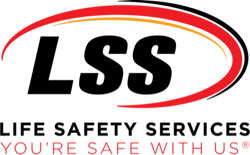The Joint Commission survey can be a frustrating time for Healthcare Facilities, especially if you keep getting citations from surveyors. To help you prepare, the Joint Commission has compiled a list of top citations for Environment of Care and Life Safety from a list of hospital surveys that were performed back in 2014.
Unfortunately, The Joint Commission’s list reveals that surveyors are finding the same problems during hospital surveys each year. This can be a huge problem because it’s important for hospitals to make sure that all of their Environment of Care and Life Safety standards are in compliance with the code. To help you narrow where your focus should be, here is a list of the findings from The Joint Commission’s top citations for Environment of Care (EC) and Life Safety (LS).
The Joint Commission’s Top Environment of Care and Life Safety Citations:
56% for EC.02.06.01 (maintenance of a safe environment)
- An unsafe environment can cause harm to both patients and the staff. Dirty ventilation systems and rooms can cause infection, which can prolong a patient’s stay. Properly cleaning the vents and ductwork of the building will help keep patients and the staff healthy and safe.
53% for EC.02.05.01 (management of utility systems)
- Utility systems, just like any other system, can fail. However, clearly labeling each utility system with detailed instructions can help reduce potential risks while trying to correct the system.
50% for LS.02.01.20 (maintenance of egress integrity)
- In the event of an emergency, not being able to see could cause serious harm to patients and staff. Egress path marking systems and exit signs help prevent accidents and injuries in smoky or blackout conditions.
48% for EC.02.03.05 (maintenance of fire safety equipment and building features)
- A building’s fire safety equipment is important to the integrity of the building and the safety of people’s lives. Maintaining the building’s fire safety features will help guarantee everyone inside will be safe in the event of an emergency.
46% for LS.02.01.10 (minimal fire, smoke, and heat damage through fire protection features)
- Building structures can become worn down through use or even a previous emergency. Reducing the amount of damages done to the building’s structure, will help prevent any risks or fire hazards that can cause harm to patients and the staff’s lives during an emergency.
43% for LS.02.01.30 (building features provided and maintained to protect from fire and smoke)
- Fire/smoke dampers, fire doors, and fire walls/barriers are put in place to prevent the spread of fire and smoke in the event of a fire. Keeping them up-to-date and in compliance with the code will help ensure patients who are unable to be moved during a fire remain safe.
43% for LS.02.01.35 (fire extinguishment features provided and maintained)
- Fire extinguishers, sprinkler systems, and fire hydrants help firefighters to put out a fire all together. Making sure they are provided and maintained will continue to help firefighters in extinguishing a fire.
36% for EC.02.02.01 (management of hazardous materials and waste)
- Not properly disposing of hazardous materials and waste can cause an unsafe environment to patients and the staff. Make sure that any hazardous materials and waste is stored in a proper container with an airtight lid. Also, be sure that the containers are clean and stored in a room away from patients.

